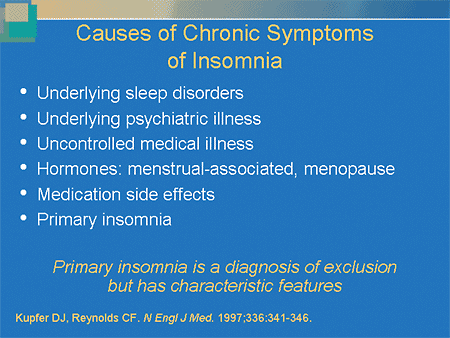

Signs of insomnia test free#
They can come into the room to free up the wires if you need to get up.ĭuring the study, the technologist may have you try a positive airway pressure (PAP) machine for sleep apnea. If you need help, you can talk to them through the monitoring equipment. The technologists monitor you during the night. While you sleep, a technologist monitors your: This monitors the level of oxygen in your blood. A small clip also is placed on your finger or ear.

The wires are long enough to let you move around in bed. The sensors are connected by wires to a computer. They're applied to your scalp, temples, chest and legs using a mild adhesive such as glue or tape. This allows them to talk to you and hear you from their monitoring area outside the room.Īfter you get ready for bed, one of the technologists will place the sensors. This allows the polysomnography technologists to see what's happening in the room when the lights are out. The sleeping area will typically have a low-light video camera. You won't share the room with anyone else. If you're at a sleep center, the room where polysomnography is done is similar to a hotel room. Your health care provider may ask you to keep a sleep log. You'll need to place the sensors on your body and turn on the machine according to the instructions you've been given. If you're having a home sleep apnea test, follow your regular bedtime schedule. You also can sleep in your own nightclothes. You can bring items you use for your bedtime routine. If you're having a sleep study in a sleep center, you'll arrive in the evening and stay overnight. What you can expect During polysomnography Ask questions if you're unsure about how the test or equipment works.
Signs of insomnia test how to#
You'll be given instructions on how to use the equipment. Or you might pick up the equipment at your provider's office. They can interfere with the test's sensors, called electrodes.įor a home sleep apnea test, the equipment is delivered to you. But don't put on lotions, gels, colognes or makeup before the test. You may be asked to bathe or shower before your sleep study. Also don't nap in the afternoon before a sleep study. They may make symptoms of some sleep disorders worse. Alcohol and caffeine can change your sleep patterns. How you prepareĭon't consume drinks or food containing alcohol or caffeine during the afternoon and evening before a sleep study. This can be caused by the adhesive used to attach the test sensors to your skin.
Signs of insomnia test skin#
The most common side effect is skin irritation. Polysomnography is a noninvasive, painless test. People with insomnia have trouble falling asleep or staying asleep. This includes walking, moving around or rhythmic movements during sleep. This sleep disorder involves acting out dreams during sleep. People with narcolepsy experience overwhelming daytime drowsiness. Restless legs syndrome causes an uncontrollable urge to move the legs while you're awake, usually in the evenings or at bedtime. This condition is sometimes linked to restless legs syndrome. People with this sleep disorder flex and extend their legs while sleeping. In this condition, breathing stops and starts repeatedly during sleep. Sleep apnea or another sleep-related breathing disorder.

Your health care provider may recommend a sleep study if it's suspected that you have: But sleep disorders can interfere with this sleep process. You cycle between NREM and REM sleep in about 90 minutes. You typically go through multiple sleep cycles a night. Most dreaming occurs during this stage of sleep. Your eyes quickly move back and forth during REM sleep. This sleep stage is called rapid eye movement (REM) sleep. This is recorded during a sleep study with a test called an electroencephalogram (EEG).Īfter an hour or two of NREM sleep, brain activity picks up again. During this stage, brain waves slow down. The typical process of falling asleep begins with a sleep stage called non-rapid eye movement (NREM) sleep. It can identify if or when your sleep patterns are disrupted and why.

Polysomnography monitors your sleep stages and cycles.


 0 kommentar(er)
0 kommentar(er)
